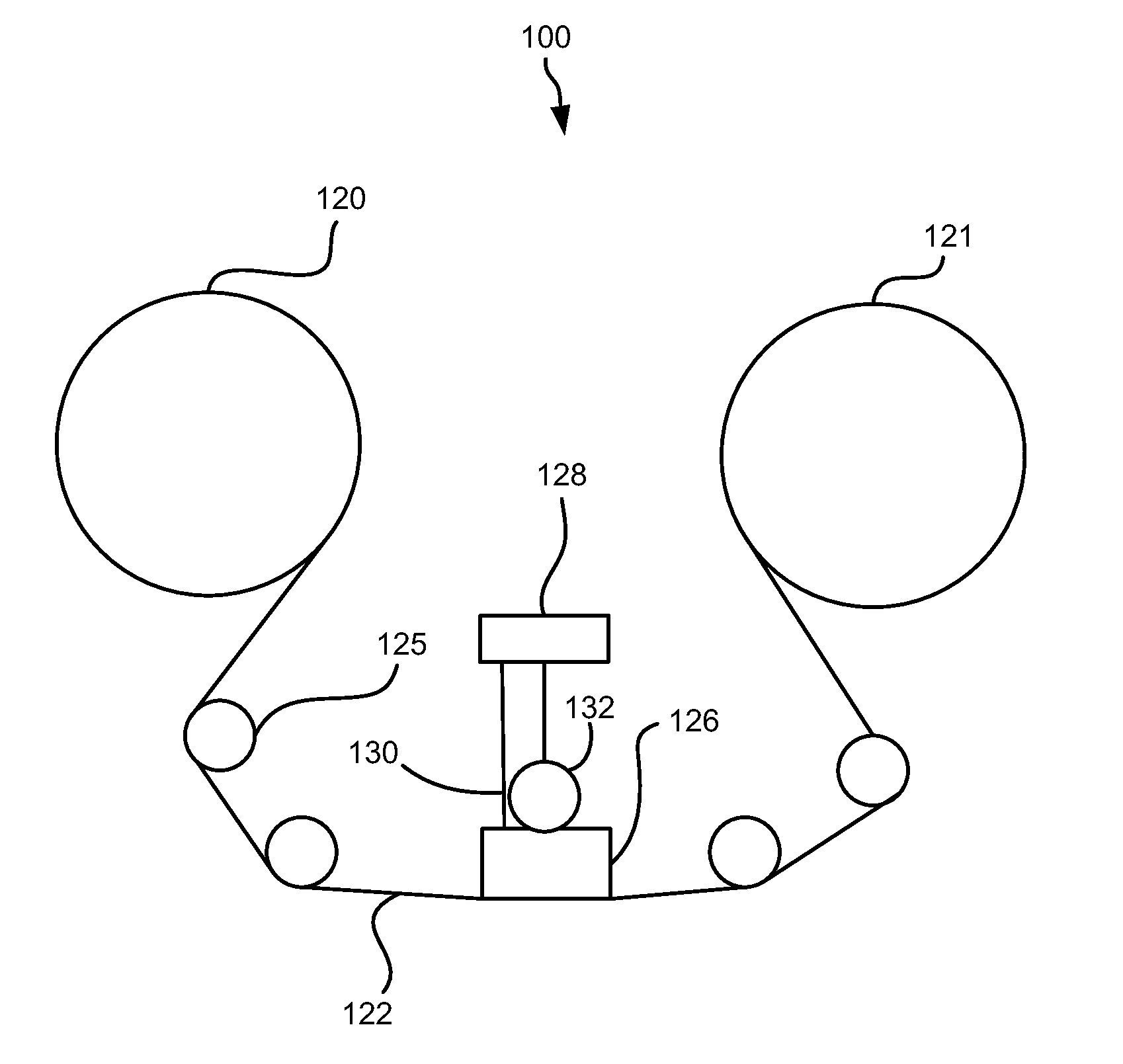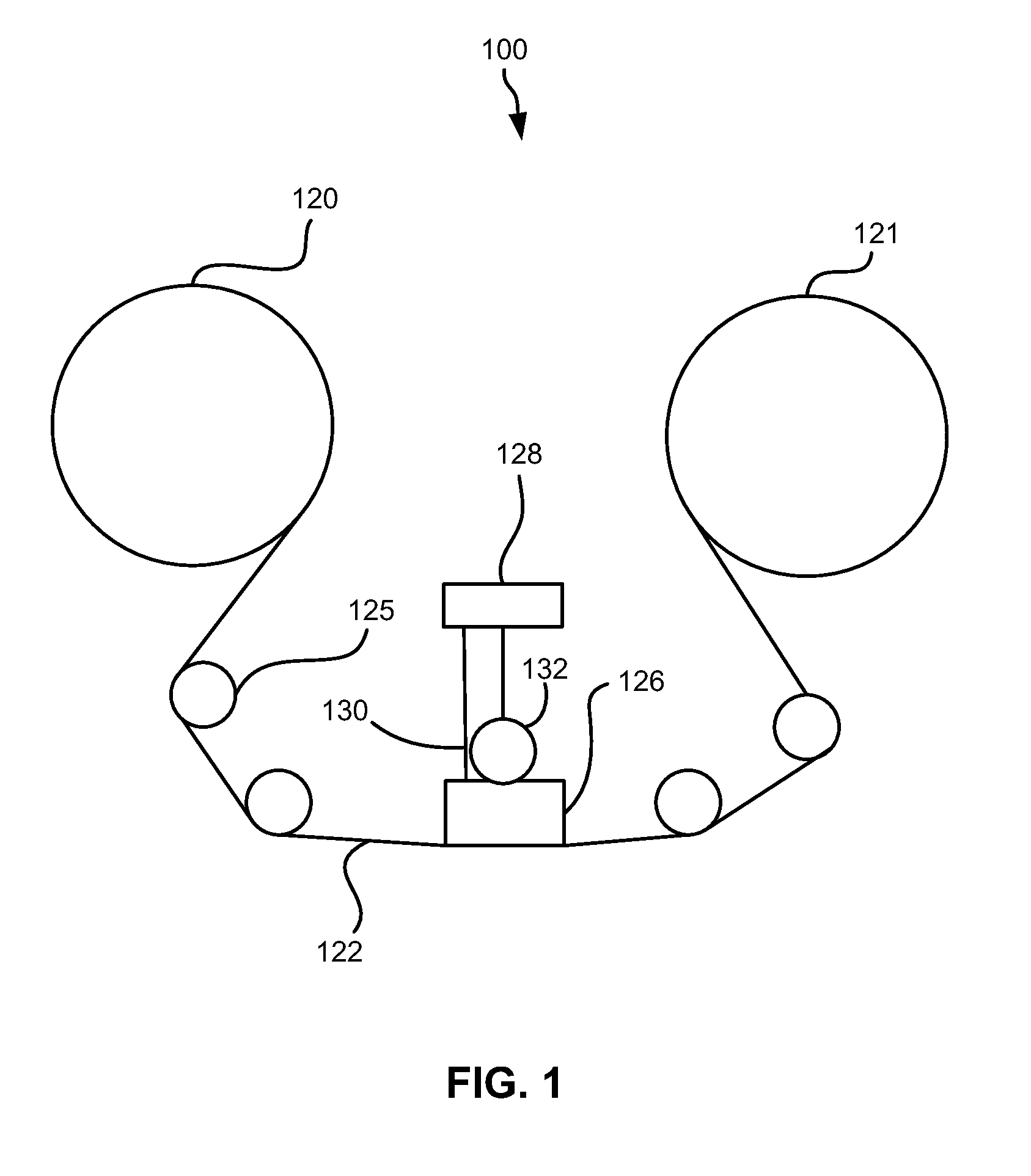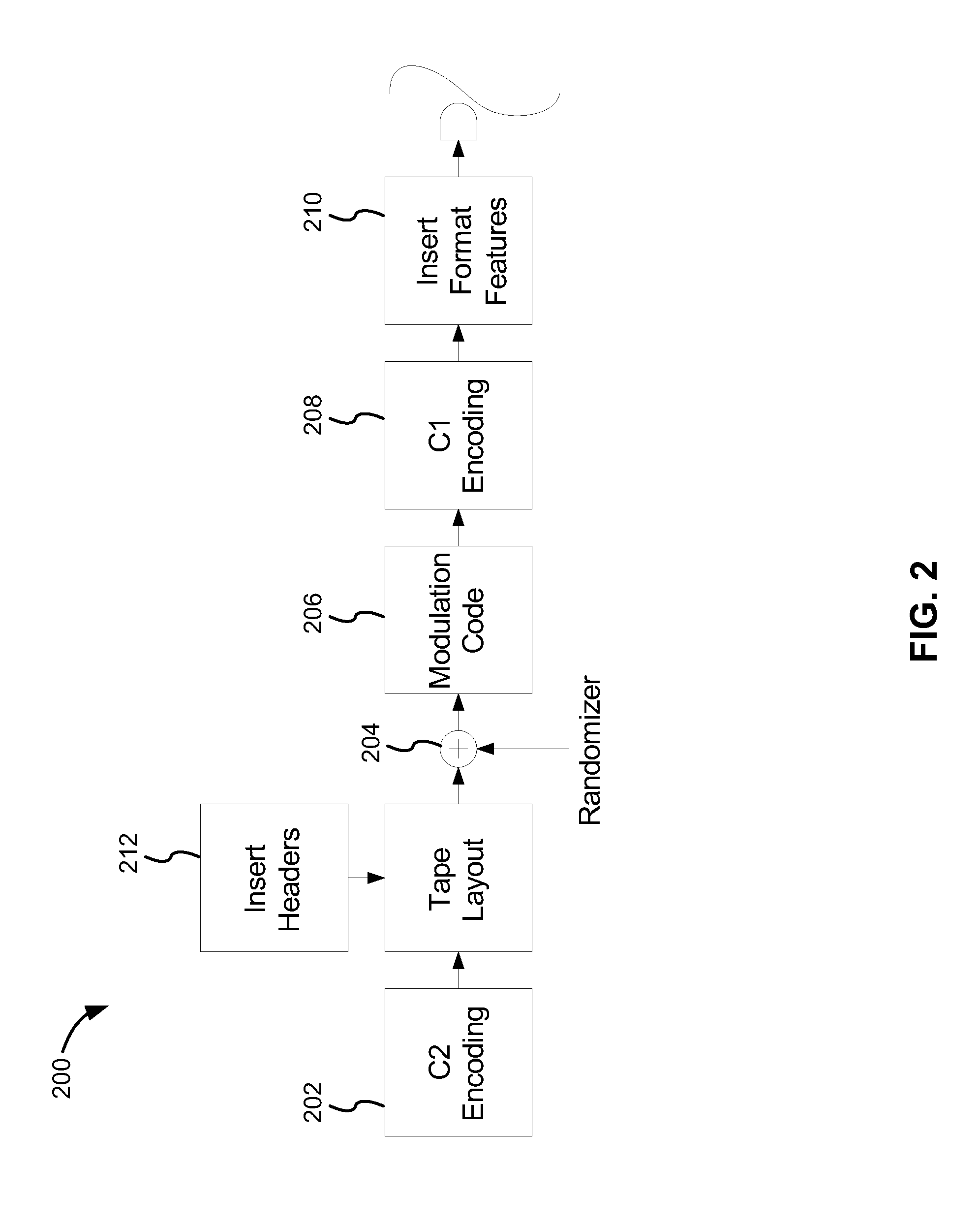Magnetic tape recording in data format using an efficient reverse concatenated modulation code
a reverse concatenation and data format technology, applied in the field of magnetic tape data storage format, can solve the problems of inability to perform soft detection using current data structures, inability to use soft detection with current data format architecture, and inability to insert modulation codes
- Summary
- Abstract
- Description
- Claims
- Application Information
AI Technical Summary
Benefits of technology
Problems solved by technology
Method used
Image
Examples
example h -
Example H-Matrix
[0071]The example H-matrix may be represented by the connectivity matrix shown below, according to one embodiment. In this connectivity matrix, each check node is listed in the left column starting with index 0 (the top row of the H-matrix). The location of each 1 entry within the check node of the H-matrix is given in the corresponding row of the connectivity matrix, again starting with bit index 0 being the left column.
Check-Node #Symbol-Node Indices025671014112389103156940271053481160346757101181289
Simple Example of a Check-Node Connectivity Matrix
[0072]The systematic H-Matrix for a LDPC code, according to one embodiment, may have 120 check-nodes (M=120) and 1992 symbol nodes (N=1992). This creates 120 parity bits which normally may be concatenated to the end of the modulation-encoded block. However, since the data has been modulation encoded, this is not acceptable. Having 120 parity bits at the end of the 1872 bit modulation-encoded block would destroy the prope...
PUM
| Property | Measurement | Unit |
|---|---|---|
| magnetic | aaaaa | aaaaa |
| size | aaaaa | aaaaa |
| length | aaaaa | aaaaa |
Abstract
Description
Claims
Application Information
 Login to View More
Login to View More - R&D
- Intellectual Property
- Life Sciences
- Materials
- Tech Scout
- Unparalleled Data Quality
- Higher Quality Content
- 60% Fewer Hallucinations
Browse by: Latest US Patents, China's latest patents, Technical Efficacy Thesaurus, Application Domain, Technology Topic, Popular Technical Reports.
© 2025 PatSnap. All rights reserved.Legal|Privacy policy|Modern Slavery Act Transparency Statement|Sitemap|About US| Contact US: help@patsnap.com



